Should Houston have an art fair? If so, what kind of fair can succeed here, and how? These questions are fresh on people’s minds, as the Texas Contemporary Art Fair was recently held in Houston for its sixth year.
I spoke with local and out-of-town dealers, as well as consultants, collectors, and fair organizer Max Fishko about the fair’s evolution. What everybody agrees on is that the fair has shrunk, with noticeably fewer out-of-town dealers than it had in its early years. (This year there were 46 commercial gallery booths, versus a high of roughly 70 in 2013.) There is also general agreement that the overall caliber of works being shown has diminished, and that fewer expensive works (which in Houston means $50,000+) were exhibited and sold. As one Houston collector put it: “It finally hit a wall this year.”
The most obvious reasons for this are economic and political: election years tend to be worse for spending as well as philanthropic giving, and the continued low oil prices have surely dampened some local collectors’ appetites for spending money on art. Houston dealer Betty Moody believes any dip in the fair this year was “totally due to economic reasons,” saying she spoke with galleries from other cities who didn’t want to risk coming to Houston because of weakness in the local economy.
Interestingly, some local exhibitors are more pessimistic about the fair than out-of-town dealers. While everyone agreed that the fair has slipped both in terms of size and quality from its earlier incarnations, the dealers I spoke to from elsewhere were upbeat, saying they had a pretty good fair this year. The local dealers’ reaction ranged from the pragmatic Moody, who observed that she has picked up new local clients every year she’s done the fair, to pretty much everyone else, whose reaction could best be summed up as a tired sigh.
Other dealers picked up on this undercurrent of fatigue. The San Francisco dealer Catherine Clark said that “a lot of galleries don’t give a fair more than one year and I think in certain communities it’s hard, because it takes a while to educate people that if they want a fair to stay, they have to buy.” Another dealer was more blunt, warning, “maybe the Houston art scene needs to decide if it really wants this for their city.”
But is a lack of local support for the fair the only problem? Or is the problem this fair?
In theory, art fairs bring energy and cultural attention to a city. They’re a way to generate a frisson of excitement, show off the local art scene, and attract visitors. They have become critical to the international art market, fueling its stratospheric growth over the past 15 years.
But as much as dealers give lip service to the idea that fairs are about advertising and networking (rather than selling art), at some point the rubber must hit the road. Participating in fairs is very expensive for dealers and if they don’t make sales, either directly to visitors at the fair, or in the subsequent months to contacts made at the fair, they abandon ship. Which is what seems to be happening in Houston.
So what’s the problem? Is it us, or is it them?
1. THE PROBLEM IS HOUSTON
San Francisco dealer Catherine Clark has participated in the Texas Contemporary Art Fair every year, and thus is one of the best out-of-town people to gauge its long-term success. She, like other out-of-town dealers, praised local consultants. “The economic strength of the fair resides with the art consultants, who seem more engaged and more civic-minded than they do anywhere else, at least relative to the fair,” Clark says.
But a fair can’t succeed on the strength of consultants only; individual buyers must also purchase art if enough sales are to occur. Brooklyn dealer Andrea Zieher said her own fair sales were good, but wondered whether locals didn’t have “the same sense of urgency buying from local galleries.”
Virtually all Houstonians I spoke to, whether dealers, consultants, or collectors, agreed that the fair is “putting the hurt” on local galleries. Houston dealer Arturo Palacios commented that when his gallery travels to other fairs, he’s there to meet new people and new potential buyers, “whereas in Houston, most of the people who come by, we know already.” Local consultant Julie Kinzelman perhaps put the sentiment best, saying, “I walked away feeling like we are cannibalizing our own because we are asking them to front the money [by paying for booths], and they are not matched with enough good quality booths from elsewhere.” One local artist put it more bluntly: “When organizers let in garage-sale garbage at 12K a pop, they make the good galleries look stupid.”
While there’s always been a certain amount of dreck at this fair (and every fair has variable quality art), Houstonians felt that most of the best booths, both this year and last, were Houston galleries. Which raises the question: why should local collectors get excited about a fair whose backbone is dealers they already know, and know well?
Likewise, this fair doesn’t attract visitors from outside of Houston, which isn’t necessarily the fair’s fault. Some collectors from Austin and San Antonio came out for the first year of the fair in 2011, but their numbers rapidly dwindled and at this point, we don’t much see them. Houston dealer David Shelton, who has participated in the fair every year, commented that no fair can survive on the local community alone: “Houston is not a destination city. Figuring out how to get people to come to Houston is a bigger problem than just the fair.”
On top of Houston’s lack of tourism caché, there has never been strong support for the art fair from the city officials. Neither the previous mayor, the current mayor, nor any city council members have ever visited the fair, that I can tell. As the energy around the fair dies down, there is little incentive for local institutions, outside the beneficiary of the opening night fundraiser, to rally around it.
Which leads me to Dallas.
The Dallas Art Fair, which was founded by Dallas local Chris Byrne two years before the Texas Contemporary Art Fair, is viewed by Houstonians with a mixture of wistfulness and envy (although I have heard wildly variable stories, some far from positive, from Texan and non-Texas dealers of their experiences at the Dallas fair).
But every year, the Dallas fair has gotten a little better (with arguably a slight slip in 2016), whereas Houston fair has gotten a little worse.
Whether because of the organizers, or the local community rallying around it, or both, the Dallas Art Fair generates an intense week of must-attend events for out-of-towners and the local art scene. And last year the Dallas Museum of Art started an extraordinary program where they go around the fair and purchase works for the museum’s collection without going through the normal time-consuming museum acquisition process. It’s a bid not only to attract galleries, but also to encourage galleries to bring their best work to the fair. Houston curator Clint Willour also commented that curators from the McNay Museum and the San Antonio Art Museum go to the Dallas fair, but not to Houston.
But by far the most common explanation for the relative success of the Dallas fair is not museum or collector support, but the fact that it’s organized by locals who only produce one fair a year, so they are able to pour energy into making that one fair a success.
This is the so-called “carpetbagger” criticism, which several people I spoke with for this article mentioned: when outsiders try to figure out how to engage the local community, they risk failure because they don’t understand local nuances, and can’t spend the time to acquire that understanding. Groups that run fairs in multiple cities (which includes ArtMRKT, the organizers of the Texas Contemporary Art Fair), need to expand into new cities in order to reach profitability. ArtMRKT now runs six fairs throughout the year, and that expansion has a downside: “The [ArtMRKT] guys have done as good a job as anybody with their fairs,” Catherine Clark said. “But if they asked me and wanted my feedback, I would say that hiring somebody who is in the community to bring the concerns of the community into play would be valuable for all of their fairs. There’s a reason their Art on Paper fair is really successful: because it’s in their hometown.”
So even though Houston is not a destination city and it’s still dependent on oil prices, maybe:
2. THE PROBLEM IS THE FAIR
The underpinning of the argument that Houston is the problem is that the patrons here aren’t willing or able to buy enough art at a local fair to keep it going. But whenever I hear that speculation, I remember that collectors were burdened from the beginning with supporting two fairs that were in active, fierce competition with each other.
To understand the challenges of this fair today, one must understand its history. Last year Molly Glentzer wrote about it in the Houston Chronicle, but here is the quick version:
In the mid-aughts, members of the local community, spearheaded by local art enthusiast and collector Marshall Lightman, lobbied fair organizer Rick Friedman to start a fair in Houston. Friedman’s Hamptons Expo Group (HEG) was behind the long-standing (but terrible and cheesy) fairs in Palm Springs, the Hamptons, and Aspen. Some dealers and patrons were dismayed—the last thing they wanted in town was a schmaltzy HEG fair showing crummy decorative art—but Lightman mustered enough support that the fair moved forward. I spoke to one patron who was involved in those early negotiations, and who explained that the Houstonians working on the fair were dealing with Max Fishko, who was then a consultant with HEG. When Fishko suddenly left HEG and organized a competing fair in Houston, this person indicated that the Houston collector base felt surprised, and “a little put-upon” to be suddenly asked to support two fairs that were now scheduled three weeks apart. Even if people liked Fishko personally and believed that he would and could produce a better-quality fair, they initially felt some degree of loyalty to Friedman, who after all had been first to the Houston art fair dance. For his part, Lightman, a board member of the Houston Art Alliance, vehemently and publicly denigrated the Texas Contemporary Art Fair, and has thrown the Alliance’s (and thus the city government’s) support behind the Houston Fine Art Fair ever since.
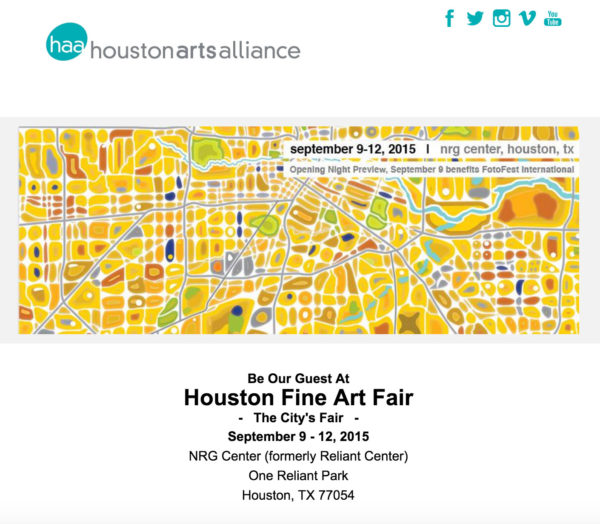
An email sent from the Houston Arts Alliance, the city entity in charge of arts grants and public art, in support of “The City’s Fair” last year. The Texas Contemporary Art Fair has never received such support from HAA.
Despite all the backbiting (and it was rough: local dealers and even museum directors were dragged into taking sides), there was great energy in the first two or three years of the Texas Contemporary Art Fair. It was exciting to have a good art fair in town, and the community rallied strongly around it. (Glasstire created a Western saloon booth and brought a miniature pony to the fair’s inaugural year.)
By contrast, Friedman’s Houston Fine Art Fair quickly went downhill. I visited its dismal iteration last year at Reliant Park, and the less said of that, the better. After that fiasco, Friedman sold HEG to a fair conglomerate that owns the well-respected SOFA design fair, among others.
Although I didn’t attend the newly-christened “Houston Art Fair” this year (they dropped the word ‘Fine’ from the title), by most accounts it was essentially a cheerful little street festival that was held indoors: 22 exhibitors, including jewelry vendors, in the Silver Street Studios, with food trucks in the gravel parking lot. Clint Willour said that “maybe five or six” of the exhibitors would have fit in the Texas Contemporary Art Fair, “and the rest was a hodge-podge that looked like [the organizers] went through Santa Fe and said, “Can you come, Can you come, Can you come?”
Everyone I spoke to for this article said they wished the new owners of the Houston Art Fair would just turn the Houston fair into a good design fair, like SOFA. Then perhaps the two competing fairs might reinforce each other, rather than exhausting the local community. Houston dealer Barbara Davis, who exhibits at the Texas Contemporary Art Fair, noted the ongoing problem of “confusion” between the two fairs, particularly for first-time art buyers.
Granted, this difficult early history is water under the bridge, and the venomous competition between the fairs has all but abated. But one could argue that the bad start ultimately torpedoed any chance these fairs might have had for success. As Houston art consultant Lea Weingarten put it: “One of the reasons that the Texas Contemporary has not met its potential, in my opinion, is that two male egos got in the way of creating one coordinated fair weekend. During those critical growing years [here in Houston], the Dallas fair was marketing a much less confusing product. Most galleries outside of Texas will only do one Texas fair—and many of them chose Dallas. ”
And there are still other possible reasons the Texas Contemporary Art Fair isn’t thriving.
First, the location. The George R. Brown Convention Center (the GRB) has been a carbuncle on the rear end of downtown Houston for decades. Hulking, vast and seemingly empty, with the ugliest carpet you’ve seen outside of a chain movie theater, the GRB is about as fun to visit as a dead mall. To make matters worse, somewhere along the line, some genius at the City of Houston signed an exclusive contract with the food vendor Aramark for the space, such that it is impossible to get anything to eat there beyond a soggy turkey wrap with a bit of wilted, blackened lettuce hanging out of it. Truly: the quality of food at the GRB, particularly in a city regarded nationally for outstanding dining, is criminal. (A source within Houston First, the city entity currently renovating the GRB, spoke with me on condition of anonymity and assured me there will be other food options available by the time of next year’s fair.)
Some people I spoke with, including Fishko, believe the only viable option for a big art fair in Houston is the GRB, while others argued that if the well-regarded Untitled fair in Miami can be held on the beach in a tent, then surely we can also have a fair held in a nice tent or a temporary structure somewhere in Houston. But the venue is not the entire problem: nearly everyone believes that the F.I.G. building in Dallas (where that fair has always been held) is awful as well, and yet they still manage to have a good fair there.
Another issue with the Texas Contemporary Art Fair is the programming and the promotion, namely that there is not enough, and not enough that’s good, of either. Several local dealers complained to me about the lack of promotion for the fair, and one called the programming “lame.” A good fair will produce and promote programming that draws people in, and the main program supported by the Texas Contemporary Art Fair the past two years has been The Other Mexico, a featured section of Mexico galleries. On the one hand, this effort produced a success in the dealer Enrique Guerrero, who showed strong work both years at the fair and is now planning to open a space in the 4411 Montrose building in Houston. On the other hand, this year the size of the special Mexico section was diminished, with only four booths stuck in the back of the fair.
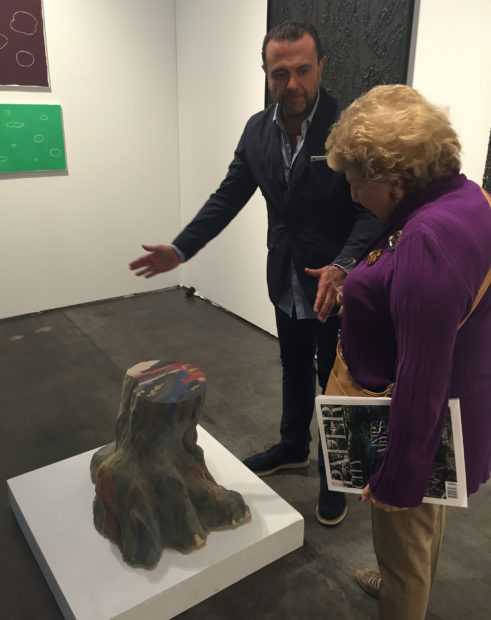
A success story of the fair, Mexico City dealer Enrique Guerrero will open a gallery in Houston’s 4411 Montrose building
Generally, the lack of promotion resulted in “crickets and tumbleweeds” in terms of attendance. One local collector commented on how surprised she was by the attendance at the early VIP opening, saying “it was very, very light.”
Finally, there is the problem of recruiting good galleries to exhibit. Max Fishko acknowledged that “it’s been a process trying to get people to put a new fair on their calendar.” Despite saggy oil prices, there’s plenty of money in this city, and collectors still buy sensational works of art. But when you don’t have enough good quality art at a fair (especially compelling work that isn’t already familiar to local buyers), it’s hard to close deals. Art consultant Julie Kinzelman commented of this year’s fair: “I gave two tours and I had a tough time pulling together dealers to visit with whom I knew my audience wasn’t already familiar.”
The problem of a fair in Houston is also a larger problem of regional fairs generally. Fairs have proliferated, in part because they’re voguey, and in part because fair organizers must continually add more fairs to their roster to grow. The art world has been predicting the demise of art fairs as long as art fairs have existed. Even the juggernaut Miami Basel fair is routinely lambasted: it’s not an “insider fair for art lovers anymore;” it’s “a celebrity hellhole;” “everyone hates Miami,” etc. But it thrives.
Fairs aren’t going away, because above all else, they are convenient. Collectors can go to one place and see a lot of art, or something approximating art, under one roof. One former dealer explained it bluntly: “They get their egos greased by galleries desperate to sell, and they don’t have to forge actual relationships with dealers in order to buy shit. I don’t know why that would die out anytime soon.”
And so the Houston fair is up against all the challenges already described, as well as the increasingly crowded calendar of national and international art fairs. What gallery or collector wants to schlep to Houston, when they can go to Chicago or London for a fair within weeks of the Houston fair?
For her part, Catherine Clark predicts that the fair model will change across the board as galleries start demanding it: “Why pay for a booth if we can’t have some modicum of return on that investment? Either the cost of renting a booth needs to be lower, or the fair doesn’t get paid unless the gallery makes money.”
And that’s the thing: galleries and collectors now have so many choices that many cities, including Los Angeles, have struggled to sustain a great fair for more than a few years. For those of us who live in Houston and who love the city, it’s a little painful to think we can’t have a kickass art fair. While I don’t know that Houston should have one, I think the city could—but the current model will need to change.



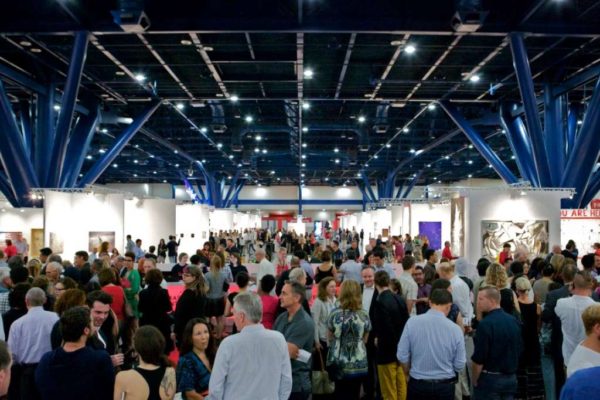
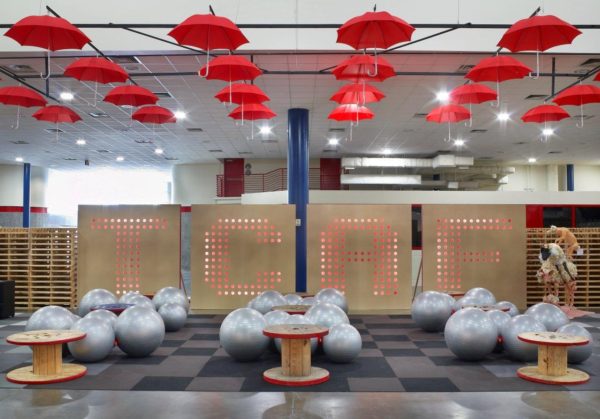
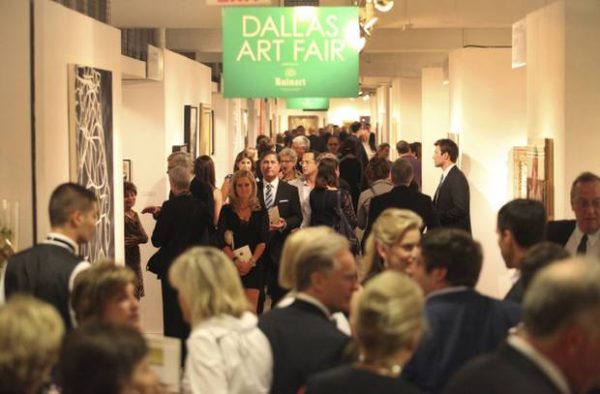

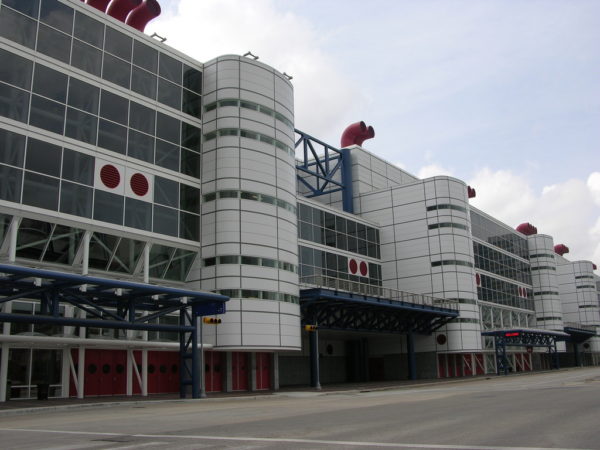
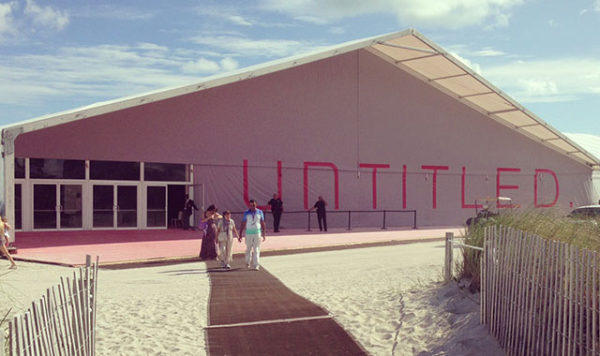

5 comments
The big problem as far as I can see is that if you have enough money to collect art, you have enough money to get in a plane and book a hotel in Miami or New York. Since there are vastly superior art fairs in other cities (and more of them), why settle for whatever can be cobbled together in Houston?
That said, a mostly locals fair could thrive. After all, not everyone who is interested in art in the Houston area comes into town to see the galleries. Especially if they live in the Woodlands or Sugar Land. In those cases, a trip to check out art is a major expedition. A good locally-focused art fair might be the once or twice a year excuse that the exurban art lover needs to take the long drive into the city. But doing this would require promotion–like maybe a billboard or two.
Great article
I agree that Houston should and could have a kick ass ‘something’. If the current model isn’t working maybe it’s time to think more progressively. Maybe it’s time to give a Biennial a shot. Houston has the FotoFest Biennial, and Student Biennial, but maybe a Houston Biennial could be just the thing to jump start the scene, bring in some contemporary art and in turn become a more attractive destination for galleries and artists. I’m pretty new here so just throwing it out there and I wouldn’t be surprised if it’s been suggested already.
Correction: There were five galleries in “The Other Mexico” section. Parallel, Oaxaca, FIFI projects, Paramo, Lulu and Jose Garcia Projects. All of which represented different regions in Mexico with the intention of opening the conversation to the entire country, not just Mexico City.
I have been involved with the Houston art scene/community since 1993 on various levels including public/non-profit sectors. The one consistent has been the level of importance art plays in one’s life in Houston. It is definitely not as important in Houston as it is in other places. In New York, Chicago, and Los Angeles, art plays a more significant part in the everyday fabric of one’s life; less so in Miami where I feel it’s more important to look good, but a strong base of collectors and a plethora of fairs with world-wide renown can still impart a sense of importance. Here, in Houston, it is much less so despite internationally important museums including the Menil Collection and the MFAH, and now the Moody Center at Rice University, and good galleries. Houston simply doesn’t have the cache that the other cities possess. People would much rather say they bought a piece in NYC, LA, or Miami than Houston. And that sucks because due to that mindset a lot of really good art, important art gets passed by. People in Houston would also much rather spend a butt-load of money on a watch, car, or clothes than on a $500 painting (and then they want a discount). It’s hard to believe Dullas gets as much press for its fair, but they are doing something right. Houston can’t…won’t…support two art fairs, it’s just not in their blood.